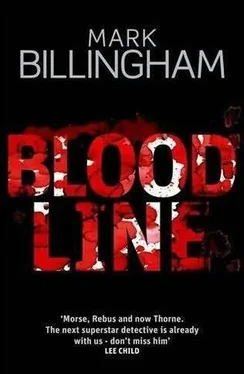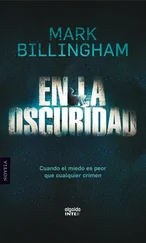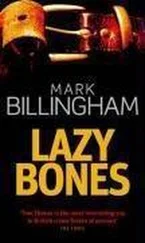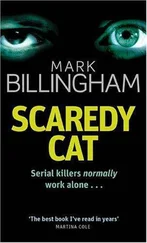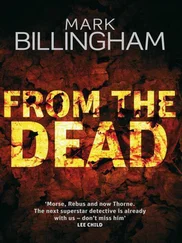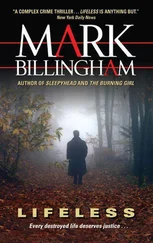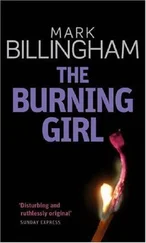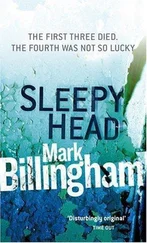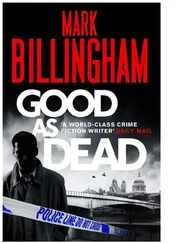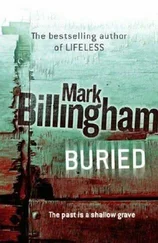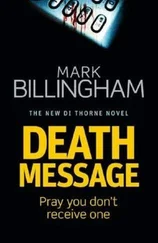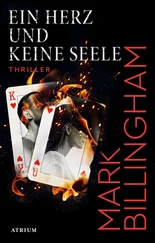Thorne nodded back towards the secretaries’ room. ‘They all yours?’ he asked.
‘I share them,’ Kambar said. He spoke like a newsreader on Radio 4. ‘There’s something of a pecking order.’
‘Are you talking about the doctors or the secretaries?’
‘Both.’ Kambar nodded the same way that Thorne had. ‘But it’s rather more fierce out there.’
Kambar was a fit-looking man in his mid-fifties. His hair was thick, silvering, like his well-trimmed moustache, and the dark suit and polished brogues, though understated, were clearly expensive. By contrast, his office was windowless, no more than a quarter the size of the one shared by the secretaries, and there was only one chair other than his own. Thorne took it, leaving Holland to lean back a little awkwardly against the door. A year planner was mounted on the wall, while Holland ’s head rested at the same level as a model of the human brain that sat at the end of a bookshelf, its different sections moulded in brightly coloured plastic: blue, white and pink.
Thorne turned and looked from Holland to the model. ‘It’s probably a damn sight bigger than yours,’ he said.
While Thorne told Kambar about their journey up, and the doctor bemoaned the vicissitudes of the London to Cambridge rail service, Holland dug into his briefcase for a photocopy of the pieced-together X-ray fragments. He handed it over. ‘What we talked about on the phone.’
Kambar nodded, studied the picture for a few seconds. He turned to his computer and punched at the keyboard. ‘And this is where it comes from…’
Thorne shifted his chair a little closer and peered at the screen. There were three images which, at first glance, appeared identical: a cross-section of a brain, grey against a black background, with a white, almost perfectly round mass towards the bottom.
‘I printed one out for you,’ Kambar said. He opened a drawer and took out what looked like a large X-ray. ‘These days all the images are digital, stored on disc, but we still occasionally use film if we need to.’ He fastened the X-ray to the light box that ran the length of the wall above his desk and studied it, as though he had never seen it before.
‘So what happened to the original?’ Thorne asked.
‘There was no original as such,’ Kambar said. ‘As I explained, the scans are stored on computer.’
Thorne pointed to the photocopy lying on Kambar’s desk. ‘So where did they come from?’
‘Well, nobody would have had any reason to print one of these things out before I did,’ Kambar said. ‘So, my guess is that they’re from one of the series I printed out and gave to Raymond Garvey a few weeks before he died. Every patient is fully entitled to keep copies of all their medical records.’ He pointed as Thorne stared at the images. ‘The white mass is the tumour, obviously.’
Holland had moved forward. ‘Looks enormous,’ he said.
Kambar made a fist. ‘That big.’
‘How long did you treat him?’ Thorne asked.
Kambar fiddled with a pencil as he took them through a potted history of Garvey’s diagnosis, treatment and, ultimately, his death. Holland made notes and Thorne listened, his eyes drifting occasionally to the pictures, stark against the light box. The simple white shadow, round and smooth, looked like nothing.
‘About three and a half years ago, Garvey had what looked like an epileptic fit in his cell at Whitemoor, gashed his head open on the side of his bunk. Turns out he’d had a few similar episodes, so they took him to the district hospital in Peterborough and did a CT scan. They would only have had the vaguest idea of what they were looking at, but we’re image-linked to most of the other hospitals, so they were able to ask us to have a look. We had… more than a vague idea. He came here a few weeks later for an MRI.’
Kambar stood up and took the plastic brain from the shelf. ‘He had a massive tumour at the base of the frontal lobe. What’s called a benign meningioma.’
‘Benign?’ Holland said. ‘I thought it was the malignant ones that killed you.’
Kambar was turning the plastic brain over in his hands. ‘They’ll kill you slightly quicker, that’s all. If a benign tumour grows big enough, the inter-cranial pressure will almost certainly be fatal. That’s why we needed to operate. Here…’ He lifted the model with one hand and pointed with the other to a pair of narrow parallel strips at the back. ‘These are the olfactory grooves.’
‘That’s smell, right?’ Holland asked.
Kambar nodded. ‘Garvey’s tumour was sitting right there. A whopping great olfactory-groove meningioma.’ He looked at Holland. ‘In fact, issues with the patient’s sense of smell are often among the earliest symptoms. Garvey claimed he had been having problems for many years. Smelling burning or petrol for no reason. Smelling nothing at all, more often than not. Sadly for him, his tumour did not present fully until long after these problems began, by which time it was far too late.’
Thorne took the model from Kambar and held it for a few seconds until he started to feel a little foolish, then passed it over for Holland to put back on the shelf. ‘So, you operated?’
‘Not for several months,’ Kambar said. ‘The inter-cranial pressure was building, no question, but there was no reason to think he was in any immediate danger. Anyway, it took him a few weeks to make up his mind. It was a high-risk procedure.’
‘But he still decided to go ahead.’
‘He did a good deal of hard thinking,’ Kambar said. ‘Took advice from some of the people he was close to. Not that there were lots of them, of course.’
‘Not too many likely to miss him,’ Holland said.
‘Quite.’
‘So he died on the table?’ Thorne asked.
‘Shortly afterwards,’ Kambar said. ‘An extradural haemorrhage. He never really woke up.’ He switched off the light box, took down the X-ray and handed it to Thorne. ‘You can keep this, if it will be useful.’
Thorne looked at the three pictures of Raymond Garvey’s brain, the tumour that had grown within it. Garvey had brutally murdered seven women and, though it had happened earlier than he might have liked, he had been granted a relatively peaceful death. Now, three years on, someone was killing again. But why? On his behalf? In his name? Someone had left pieces of this very picture for the police to find and they still had no idea how it had come to be in his possession, nor what connected him to Raymond Garvey.
‘Any idea who he might have spoken to?’ Thorne asked. ‘Those people you said he was close to.’
Kambar thought for a few moments, chewed the end of his pencil. ‘There were a couple of other prisoners, I think. Other vulnerable ones, like him.’
‘I don’t suppose you can you remember any names?’
‘I’m sorry.’
Thorne turned to Holland. ‘Maybe we should get over to Whitemoor this afternoon.’
Holland smiled. ‘You angling for another overnight?’
‘And the son, obviously,’ Kambar said.
‘We’ll make it back tonight-’ Thorne stopped. He watched Holland ’s eyes go to Kambar, saw the confusion on his face, then spun around in his chair. ‘Sorry, what?’
‘Yes, thinking about it, his son probably ended up with all Garvey’s things,’ Kambar said. ‘The X-rays and so on, after the funeral.’
‘Garvey had no relatives,’ Thorne said. ‘Well, there’s an elderly uncle somewhere, but certainly no son.’
Kambar pulled a face, as if he were struggling with a particularly cryptic crossword clue. ‘Well, there was definitely someone claiming to be his son. Someone who made my life rather a misery for a number of weeks after Garvey died. Leaving all sorts of messages, ranting on my answering machine. I’m pretty sure the same went for the governor at Whitemoor. Pestered the poor chap for ages.’
Читать дальше
